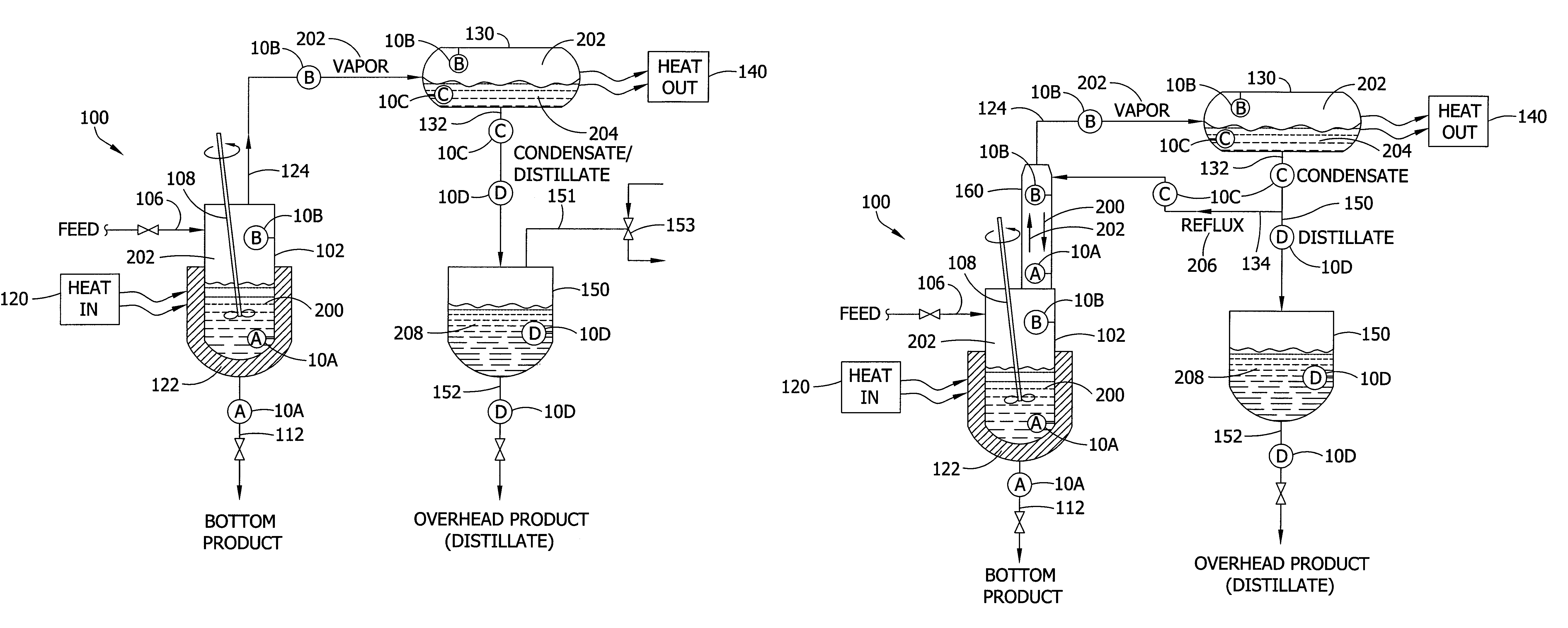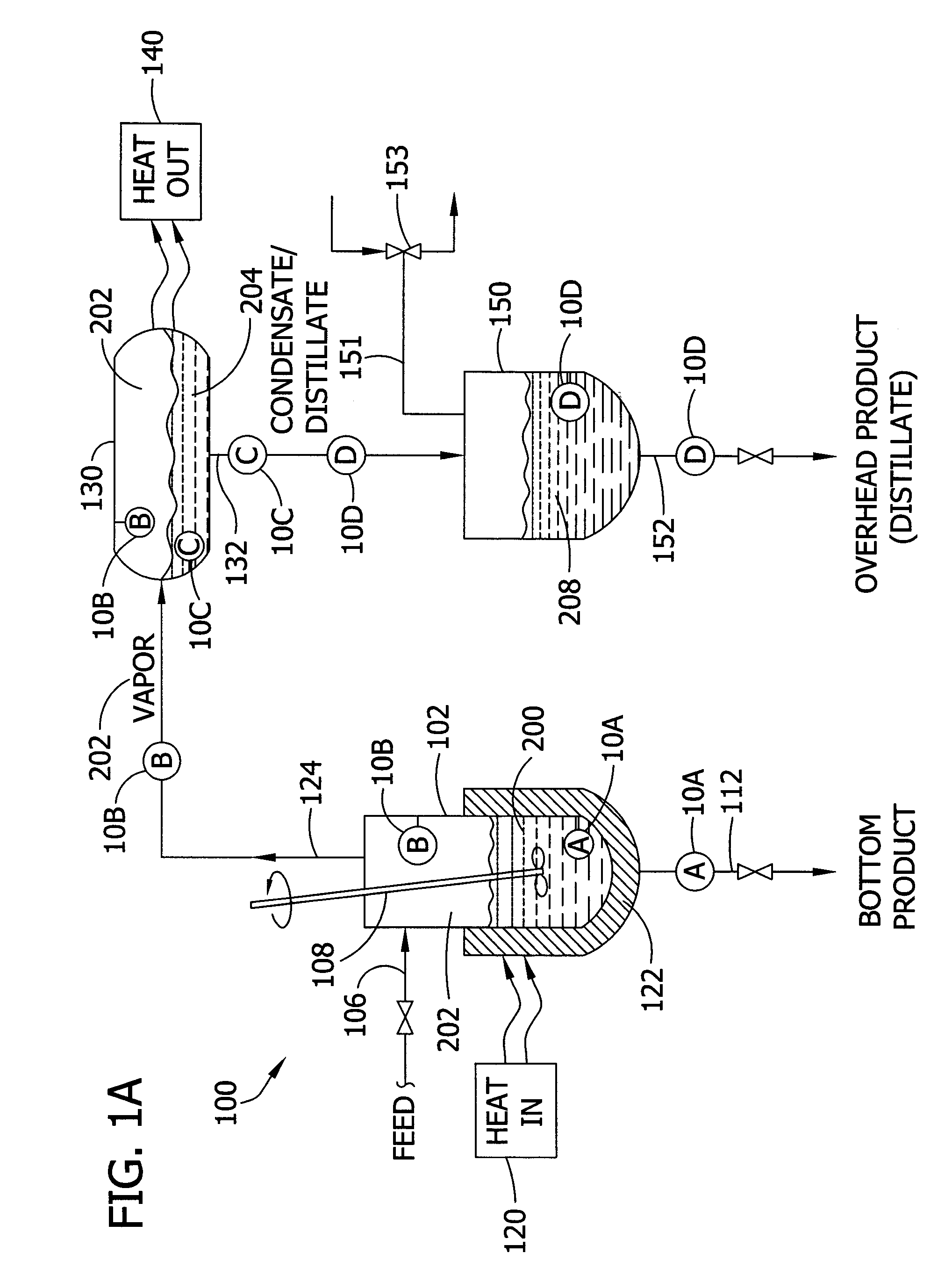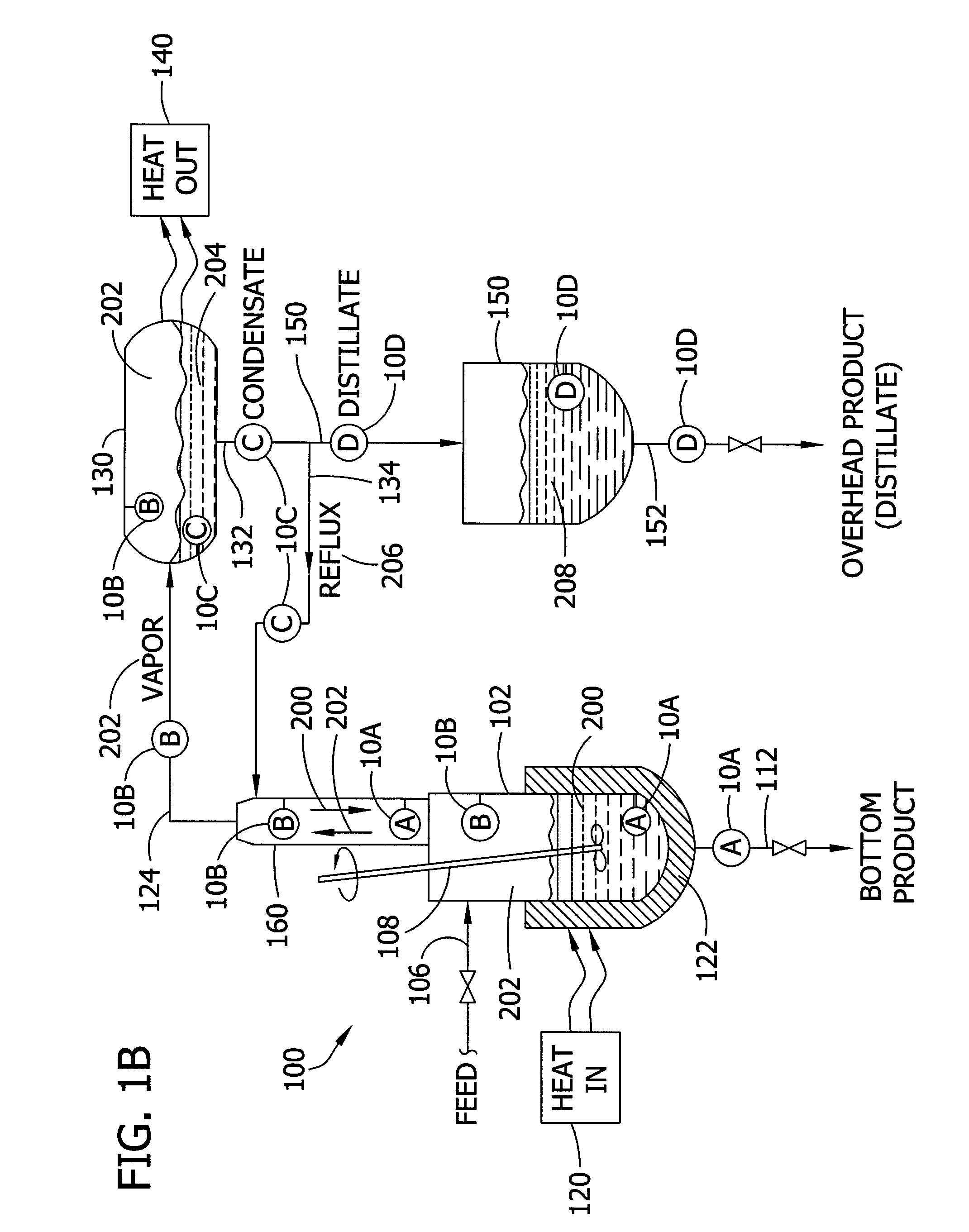Systems for monitoring and controlling unit operations that include distillation
a technology of unit operations and monitoring and control, applied in the field of fluid sensor and method, can solve the problems of affecting the efficiency of reaction control, affecting the efficiency of batch operation, and adding potentially 2-3 hours to the batch time cycle, etc., and achieves cost-effectiveness, monitoring, controlling and/or evaluating
- Summary
- Abstract
- Description
- Claims
- Application Information
AI Technical Summary
Benefits of technology
Problems solved by technology
Method used
Image
Examples
example 1
[0296]This example demonstrates the applicability of the methods and systems of the invention to a solvent switching operation. In the experimental set-up for this example, a mechanical resonator sensor was used, with a sensing surface of the mechanical resonator positioned in a process vessel.
[0297]In this example, neat ethyl acetate was switched over to neat n-heptane using a constant-volume distillation operation in a batch process vessel. Briefly, 100 mL of ethyl acetate was charged to a 250 mL round bottom 4-neck flask, equipped with a magnetic stirrer. A condenser and distillate receiver were connected in series to one neck of the flask. A thermocouple was placed into the flask via a separate second neck. A syringe pump, for continuous feed of n-heptane to the flask, was connected to the flask via a coring needle and septum through a third neck of the flask. Finally, a mechanical resonator sensor comprising a calibrated quartz tuning fork resonator was placed into the flask vi...
example 2
[0303]This example also demonstrates the applicability of the methods and systems of the invention to a solvent switching operation. The experimental set-up for this example used a mechanical resonator sensor, and simulated placement of the mechanical resonator downstream of a condenser, such as in a condenser discharge line, of a distillation system.
[0304]In this example, a solvent switch from THF to ethyl acetate was simulated by considering the suitability for measuring small amounts of THF in ethyl acetate (thereby effectively simulating residual amounts of THF that would be present near the end-point of the solvent switch). Specifically, ˜20 ml ethyl acetate was provided in a scintillation vials. Different amounts of THF (0-5 wt %) were dissolved into the ˜20 mL of ethyl acetate by shaking the scintillation vials. The vials were configured with a mechanical resonator sensor comprising a calibrated quartz tuning fork resonator, such that a sensing surface of the tuning fork reso...
example 3
[0306]This example demonstrates the applicability of the methods and systems of the invention to a solvent switching operation involving a solution, in which the solute precipitates out of solution as a result of the solvent switch. This example also demonstrates the suitability of the methods and systems of the invention for monitoring a precipitation reaction.
[0307]In this example, the methods and set-up was the same as in Example 1, except that ˜20 g of salicylic acid acetate (aspirin) was provided to the process vessel to form a solution of the salicylic acid acetate in the 100 ml ethyl acetate. The solution comprising ethyl acetate solvent was then switched over to a solution comprising n-heptane using a constant-volume distillation operation in a batch process vessel, substantially as described in connection with Example 1. The salicylic acid acetate precipitated out of solution after adding about 6.5 batch volumes of heptane.
[0308]The monitored data for density (blue data) an...
PUM
| Property | Measurement | Unit |
|---|---|---|
| frequencies | aaaaa | aaaaa |
| dielectric constant | aaaaa | aaaaa |
| dielectric constant | aaaaa | aaaaa |
Abstract
Description
Claims
Application Information
 Login to View More
Login to View More - R&D
- Intellectual Property
- Life Sciences
- Materials
- Tech Scout
- Unparalleled Data Quality
- Higher Quality Content
- 60% Fewer Hallucinations
Browse by: Latest US Patents, China's latest patents, Technical Efficacy Thesaurus, Application Domain, Technology Topic, Popular Technical Reports.
© 2025 PatSnap. All rights reserved.Legal|Privacy policy|Modern Slavery Act Transparency Statement|Sitemap|About US| Contact US: help@patsnap.com



